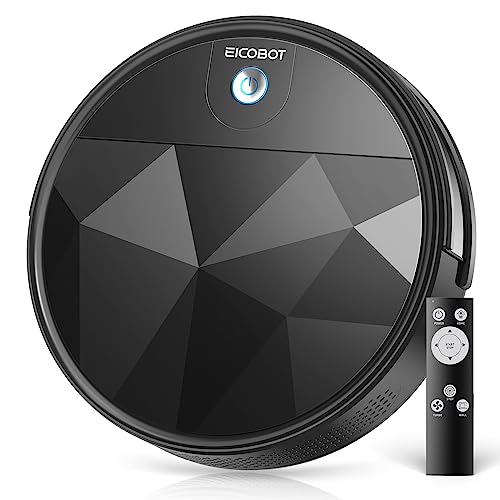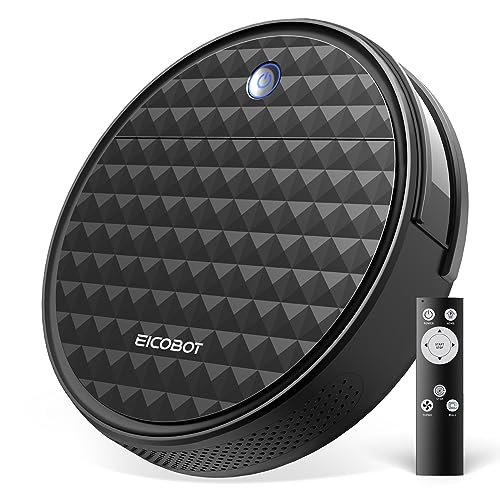See What Self Emptying Robot Vacuum For Pet Hair Tricks The Celebs Are Using
Self Emptying Robot Vacuum For Pet Hair
If you have pets, a robotic vacuum with a large dust bin is a good option. It can hold a lot of pet hair. Find a vacuum that has an object avoidance feature that can identify and eliminate everyday objects like cables, socks, and toys.
 What is an automated Linsar Robot Vacuum: 2-in-1 with Powerful Suction vacuum cleaner?
What is an automated Linsar Robot Vacuum: 2-in-1 with Powerful Suction vacuum cleaner?
A self-emptying robot vacuum is an equipment for floor cleaning that automatically empties the debris into its docking stations. The docking station has dust bags to hold the pet hairs, dirt and other debris that the robot gathers as it cleans. When the dust bin has been filled, remove it from the base and replace it. This feature removes the need to empty the robot’s onboard dust bin after every use, which saves you time and energy. This feature also stops dust from the vacuum’s dustbin and then being blown into the air. This is beneficial for households with allergies.
The decision of whether self-emptying robot vacuums are right for you depends on several factors, including your home’s layout and flooring type. If you have a lot carpeting in your home, you should choose an automatic vacuum that is powerful enough to clean the carpet. You may need to clean more often even if you don’t. If you have pets, you’ll want to look for models equipped with advanced navigation technology that can keep pet messes out and other obstacles in your home.
Some self-emptying robot vacuums can even be programmed to automatically empty their onboard dustbins into the docking station following a predetermined amount of time which means you don’t have to manually do it every time. It is important to keep in mind that emptying robot vacuums is quite loud.
It is also essential to inspect the wheels and brushroll of your robot vacuum regularly for pet hair. This could affect your robot’s ability effectively clean your home. It can also block up the filter and reduce the suction power of your robot. Luckily, many robots have easy-to-clean brushes and wheels that can be easily cleaned and removed with warm water.
Jodhaira is an analyst in product reviews at the Good Housekeeping Institute’s Cleaning Lab. She has tested a myriad of floor-cleaning devices, including vacuum mop combination devices and robot vacuums. She has personally tested all the self-emptying robots featured in this roundup.
What is the process by which an automated robot vacuum cleaner work?
The self-emptying feature is among of the most important recent developments in robot vacuum design. It eliminates one of the major drawbacks of the majority of robot vacuums, which is the requirement to empty the tiny dust bin that is onboard at each cleaning session. Most models with self-emptying bins come with docking stations that include the large vacuum bag. The robot is designed to ensure that it can dump its own waste in this larger bin. The process is automated and takes place as soon as the robot returns back to its dock for charging. It can be completed while doing other things.
The best self-emptying robots come with a range of useful features, too. Many are able to be controlled using an app that is compatible with your smartphone, which allows you to set schedules and other settings and also watch a live feed of the camera of the robot. Some models can automatically detect changes in flooring, like changing from carpeted to bare floors, and adjust cleaning modes in accordance with the changes. These machines also have advanced features like attachments, mapping and quiet modes.
 Self-emptying machines are usually expensive however, and might not be worth the splurge for everyone. Before you purchase it is important to think about the advantages and other features of this type robot vacuum.
Self-emptying machines are usually expensive however, and might not be worth the splurge for everyone. Before you purchase it is important to think about the advantages and other features of this type robot vacuum.
A self-emptying robotic cleaner could be a wonderful option for any home that needs a little assistance in keeping it clean. It will save time for homeowners who are busy and don’t have the time to pause during their daily chores and empty the trash bin on board. You might also be able to use your robot cleaner more often. It’s just a small step towards the ultimate goal of having a completely hands off cleaning machine. But it’s a great beginning.
What are the benefits of a self emptying robot vacuum?
For pet owners, self emptying robot vacuums have many advantages. They eliminate the need to empty your robot on a regular basis, meaning you don’t have to fret about running out of bin space or squatting over it. The fact that you can set the timer and let the robot do its work without any interference is also an advantage. The simple process of emptying the base before replacing bags also reduces dust blowback, which can be especially beneficial if you suffer from allergies.
A self-emptying robot will also have a larger base, which means that it can hold more dirt and debris. This can reduce the spread of allergens within your home. This is especially important if you own pets. Pet owners can also benefit from the longer runtime of a machine that cleans itself.
A self-emptying robot can also cut down on the amount of time you spend on maintenance. Instead of having to empty the onboard bin frequently, you’ll only need to empty the base every couple of weeks or more often. This is a huge benefit for parents, professionals and people with a busy lifestyle.
However, it’s important to note that self-emptying robots aren’t an answer to all your cleaning dilemmas. Even the best robot vacuums can get stuck under furniture or even on thresholds. They can also get blocked or snag on stray clothing, shoelaces or chargers for phones. While a self-emptying machine will free up a bit of your time, you’ll still require traditional vacuuming of those difficult to reach nooks and crannies.
Self-emptying robots can also be quite noisy, and pets might be scared of the noise and movement of the machine. Introduce them slowly and allow your robot to get used to the sound and movement as you move it around the home.
What are the drawbacks of a self emptying robot vacuum?
Robot vacuums that have self-emptying bases make cleaning a lot easier. Instead of having to pause during the cleaning process to empty the dustbin on board you can set it and forget it. They’re a great option for those who have a busy schedule and require to clean while managing children, work and other tasks. Self-emptying vacuums are not the ultimate in convenience. It is still necessary to empty your robot vacuum regularly.
The majority of self-emptying robot vacs have relatively small onboard storage systems, which means that they have to be cleaned more frequently than conventional models. This is especially true for homes where pet hair and other debris accumulate quickly. Some need to be emptied every two or three cleaning sessions.
Robotic vacuums can also get stuck on objects or get tangled. This requires human intervention. Some models claim to utilize sensors to stay clear of obstacles. However it isn’t always the case. They can get caught in cords, shoelaces and other toys.
The other big downside of self-emptying robots is that they’re typically expensive, which can be an issue for those on tight budgets. They also require a docking station which can be difficult to fit into smaller homes.
In addition, it’s important to think about whether the added benefits of a self-emptying vacuum is worth the cost. Find out if the model you’re considering has a large bin that will meet the requirements of your family. Also, look for other convenient features like Wi-Fi or smart house connectivity.
It is also important to determine if anyone in your family has allergies. The use of a large vacuum bag can allow debris to be reintroduced into the environment which could cause asthma and other respiratory problems. You should also look for an option that allows you to designate no-go zones. This will prevent the robot from entering your office or getting too close to antique rugs. Some older models require installation of strips, while the newer models allow you to define “no-go” areas via their apps.